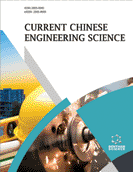Abstract
Equal Channel Angular Extrusion (ECAE) method was considered an
effective metal forming procedure to obtain higher toughness, hardness, and smooth
texture. However, the magnitude of these improvements relies on extrusion load and
temperature applied. This research assesses the impact of these extrusion variables on
the mechanical properties and stress distributions in the Aluminum 6063 (Al 6063)
produced by ECAE. Specimens of Al6063 alloy were extruded through a locally
designed and manufactured ECAE die using two factors of extrusion in three levels:
temperature (350 oC, 425 oC, 500 oC) and punch load (1000, 1100, and 1200 kN). The
speed of the ram was held steady at 5 mm/s. The tensile strength of all extruded
aluminum alloys was assessed with the universal test machine. Specimens of identical
sizes and attributes were also modeled using qform software under extended applied
load and temperature to investigate the distribution of stress in the extrudates. Research
findings revealed that the temperature of the billet had an impact on the tensile strength
more considerably than the load applied. Results of simulation revealed that more
homogeneity of stress at a lower magnitude was noticed in extrudates with an
increment in temperature of the billet. The simulation also reiterated the dominance of
the billet temperature over the applied load on the stress dispersion with a maximum
extrusion load of 500 kN at 350 oC temperature, regardless of the load applied. This
result reveals how extrusion temperature increase and load enhance the tensile strength of alloys but in varying degrees. An increase in load above normal level does not
improve mechanical properties but is a waste of resources.
Keywords: Aluminum, Billet Temperature, Load, Simulation, Tensile strength.






















